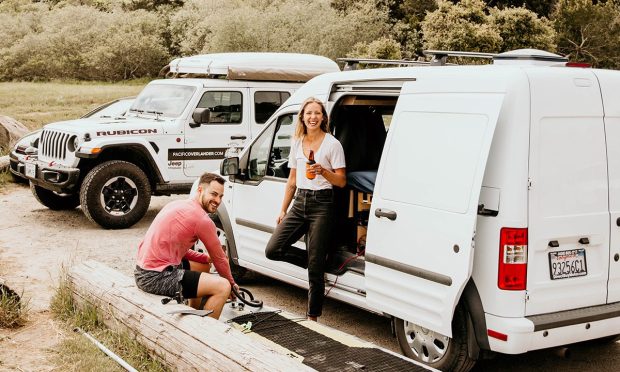New RV Lending Model Offers Big Drop In Borrowing Costs For Owners Who Rent Them Out

For owners who list their recreational vehicles (RVs) on Outdoorsy, a global online RV rental and outdoor travel marketplace, the monthly note for the loan value is the most expensive part of owning the vehicle, even those most owners don’t comparison shop before they buy.
A typical owner with one or two RVs that they rent out is often sitting on more than $200,000 in assets — a sum that is second only to their primary residence.
When they bought these vehicles, 90% of those surveyed by Outdoorsy just went to the dealership, found an RV they loved and got their financing there.
“Some of them end up walking out of these RV dealerships with 6%, 8% and sometimes as high as 12% interest for as long as 15 to 20 years,” Outdoorsy Vice President of Product Anish Bhatt told PYMNTS. “Imagine having a loan with the life of a house but on an asset that’s depreciating like a car.”
Finding Themselves Underwater
When the day comes that they feel the rental business is doing well and they want to upgrade the vehicle, the owners find that the vehicle has depreciated — and when they pay off the loan, they’re underwater.
“So, this very lucrative rental business that you were planning to start, all of a sudden starts to struggle,” Bhatt said.
This situation inspired Outdoorsy’s partnership with Lead Bank, which was announced on Sept. 28, to bring RV-focused lending solutions to the U.S.
The companies each contribute to a process that is different from that used by other banks, Bhatt said. Some banks see the RV as just a very expensive depreciating asset. Beyond that, when they learn the RV is being rented out, they say it’s going to get dings and dents that will cause the value of that asset to go down even more.
Valuing It Like a Business
In contrast, Lead Bank looks at the rental income, values it and adds it in as if it were collateral. Outdoorsy supports this by writing a letter of recommendation on each loan application noting how much rental income the owner has generated with RVs. Some have earned as much as $2 million a year.
“When you do that, they say, ‘Well, that’s fantastic. You’re taking an asset that is losing its value, but you’re collateralizing it, you’re making sure it’s earning for you, so we should value it like a business,’” Bhatt explained. “So, all of a sudden, we’re able to get loans as low as 3.74%.”
Outdoorsy also has a partnership with Roamly Insurance to provide coverage for RVs.
“Owning a part of this ecosystem makes it easy for us to make interest rates as low as this,” Bhatt said.
The insurance and loan products are available not only to those who book on its platform, but also to any RV owner.
Looking at Other Aspects of Their Business
Earlier in his career, Bhatt worked for Google and Apple and was part of the team that took Square to an initial public offering (IPO). His time at Square was especially relevant to what he’s doing at Outdoorsy.
See also: Outdoorsy Considering IPO Later This Year
“When we were thinking about launching this Square Capital product, we realized cash flow is tight for small businesses,” he said, recalling his time at Square.
Bhatt saw that small businesses needed to have funds to purchase the next batch of inventory or do the required amount of marketing. Square stepped in with small business loans.
In the RV rental market, he noted, every one of those listers are mom-and-pop businesses. Bhatt considered that Outdoorsy could give them small business loans, but then he learned that 60% of the listers would use those funds to pay down those loans on the RV.
“For us, it made the most sense to start focusing on the RV loans to start, and then over time, we’ll look at other aspects of their business and make sure we give them the chance to grow,” he said.
